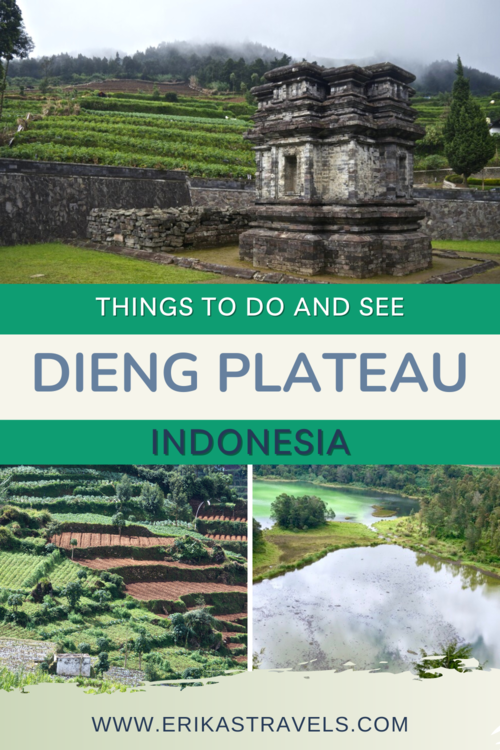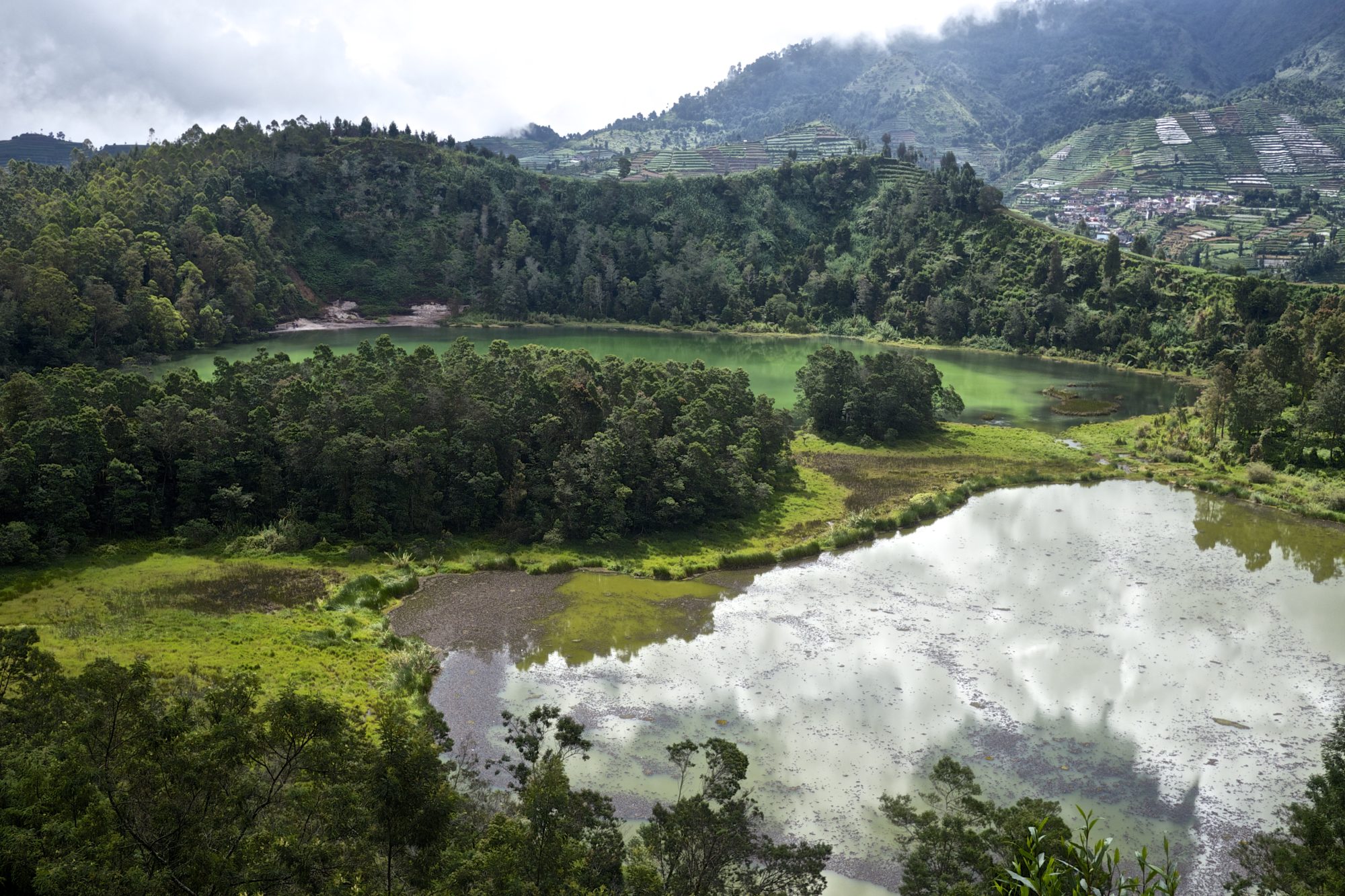
Dieng Plateau Day Trip from Yogyakarta
When people think of Indonesia, their imaginations usually take them straight to Bali and its abundance of ornate Hindu temples.
But high up in Dieng Plateau of Central Java, a much more off-the-beaten path adventure awaits that can be equally rewarding.
The name “Dieng” means Abode of the Gods and there are clusters of ancient temples—most dating back to the 8th and 9th centuries—that sit nestled in the area’s verdant hillsides.
In the Dieng Plateau, the cultural and geographical riches rival those you’ll see in Bali.
But there’s one major difference: you won’t find the crowds.
DIENG PLATEAU IN JAVA
The Dieng Plateau sits high in the mountains of Java. The area is home to sparkling turquoise lakes, craters spewing sulphuric gases and some of the oldest Hindu architecture in Indonesia.
Our Dieng Plateau day trip took us through lush mountainsides boasting tremendous natural beauty.
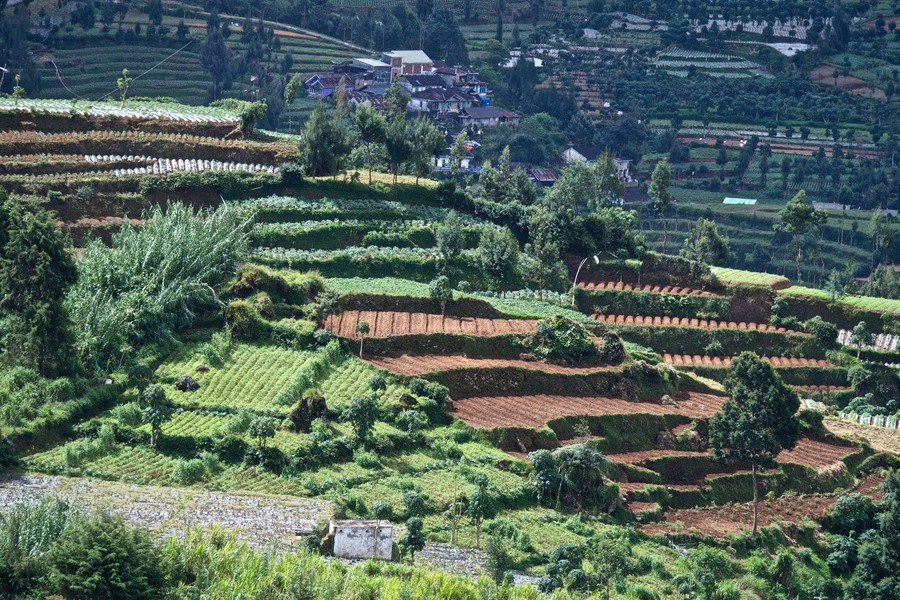
As we made our way out of Yogyakarta’s chaotic traffic, we began snaking our way up precipitous mountain roads. Along the drive, I gaped at the rows of rice fields, the sweeping vistas, and the picture-perfect villages clinging to the terraced hillsides.
Since Java’s population density ranks as one of the highest in the world, farmers have taken advantage of every inch of arable land by carving terraces into the mountainsides.
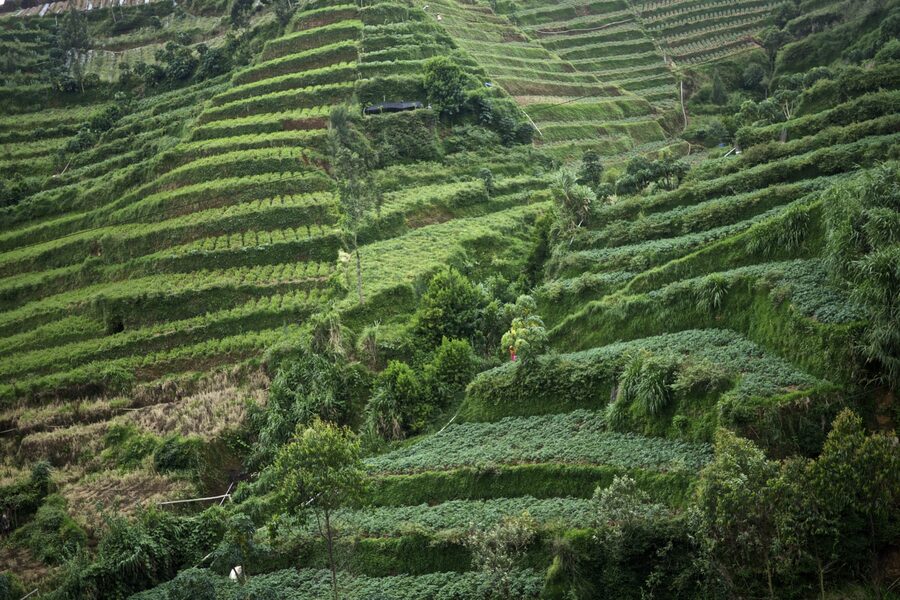
The Dieng Plateau’s rich volcanic soil makes the area ideal for farming and growing crops. Potato and tobacco plantations lie draped over the plateau’s mountainous landscape like a patchwork quilt.
It is an incredible area and I’m surprised it has managed to dodge the hoards of backpackers that descend on the Banana Pancake Trail every year.
VISITING THE DIENG PLATEAU IN ONE DAY
A Dieng Plateau day trip was not part of my original Indonesia itinerary.
Yet, when my travel companion’s bout of food poisoning forced us to stay in Yogyakarta for an extra day, I decided to explore the surrounding countryside with a friendly Brit from my hostel.
The plateau was merely a blip on my radar, so I didn’t think twice about spending only one day in its mist-shrouded highlands.
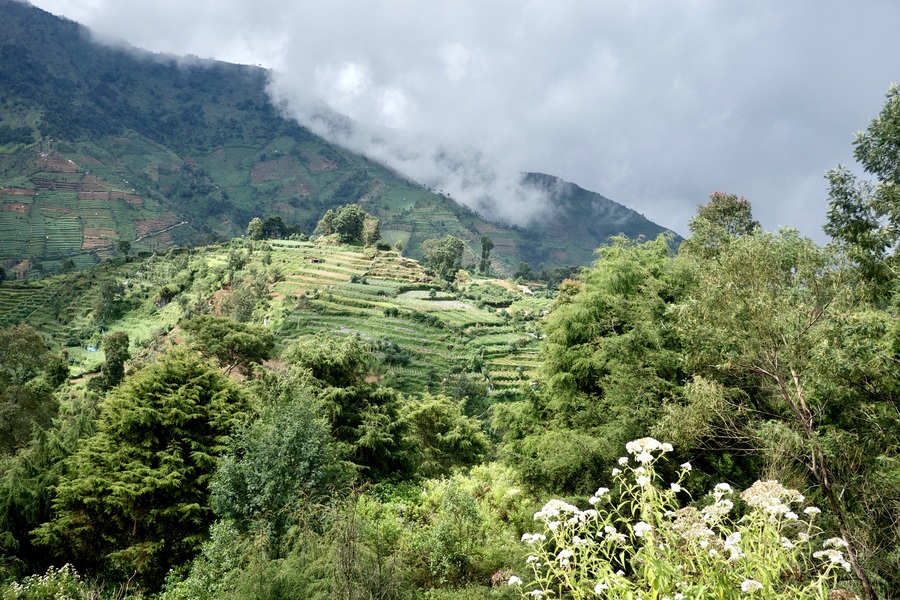
Despite the area’s proximity to Yogyakarta, however, I soon learned that the Dieng Plateau takes a while to reach. During our day trip, we clocked in nearly four hours of driving each way. I only recommend visiting the area as a day trip if you are short on time.
If you have a flexible enough itinerary to do the area justice, I would suggest spending at least two days in the Dieng Plateau.
-
TWIN LAKES: TELAGA WARNA AND TELAGA PENGILON
An undeniable highlight of the area is the scenic trail that winds around the twin lakes of Telaga Warna and Telaga Pengilon (known to foreigners as Mirror Lake and Color Lake).
We payed the $7 tourist fee and hiked the trails around the lakeshore. From a rocky ledge above the lakes, we had a spectacular view of the adjacent bodies of water.
On a sunny day, Color Lake reveals shades of yellow, blue, turquoise and brown, while Mirror Lake’s glassy surface reflects a perfect image of the sky.
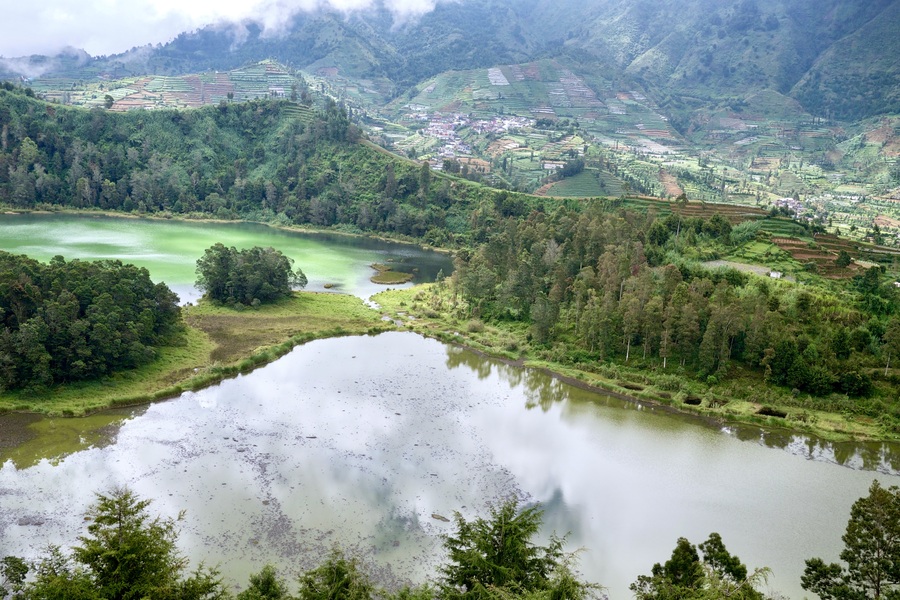
All around, a velvety patchwork of saturated colors forms a scenic backdrop.
-
KAWAH SIKIDANG CRATER
The next stop on our Dieng Plateau day trip was a visit to the steaming Kawah Sikidang Crater.
Java lies along the Pacific’s Ring of Fire and the island is almost entirely of volcanic origin. It contains 45 active volcanoes—including majestic Mt Bromo and Kawah Ijen. These volcanoes have played a vital role in the geological and human history of Java and have contributed greatly to the island’s fertile soil.
While the Kawah Sikidang Crater is small in comparison to some of Java’s other geological sites, it is well worth visiting. The area is reminiscent to a miniature version of America’s Yellowstone, or Iceland’s Haukadalur.
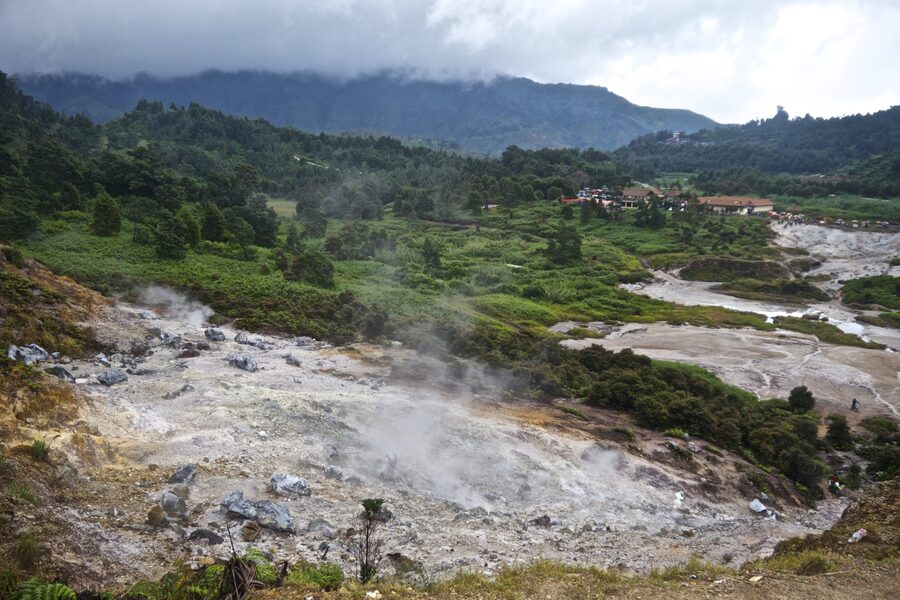
A trail takes visitors past rows of food stalls to the main fumaroles and mud pots in the area. Typical of geologically active sites, the air around the crater smells of sulfur. I soon realized that the flimsy medical face masks we had bought at the entrance to the park would do little to diffuse the pungent smell of rotting eggs.
So we plugged our noses and walked around the steaming craters–admiring the greens and oranges and grays of the surrounding scenery.
-
ARJUNA TEMPLE COMPLEX
The plateau is home to a small cluster of Hindu temples. While estimates suggest that the temples once numbered in the hundreds, only eight remain today. The temples show many features of Indian Hindu temple architecture.
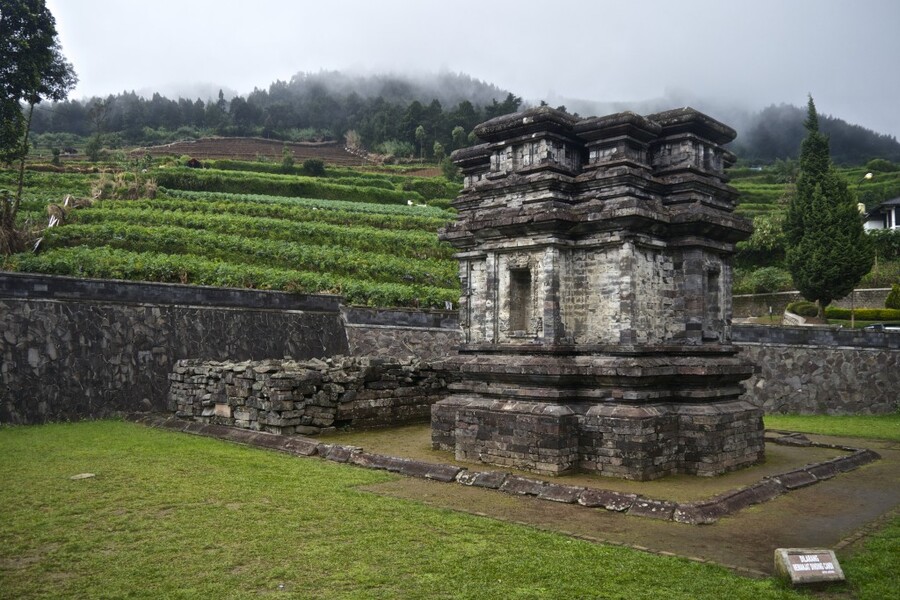
Entrance to the Sikidang Crater includes a visit to the nearby Arjuna Complex. The Arjuna Temple Complex is not as imposing as that of Prambanan. Nor is it as ornate as the Hindu temples found in Bali.
Yet, the area’s small concentration of shrines predates most other religious structures in Indonesia.
The temples that lie nestled among the Dieng Plateau’s potato fields are the oldest ruins in Java. Estimates suggest that they date back to the 7th and 8th centuries.
TOURISM IN THE DIENG PLATEAU
After staying largely on the tourist trail during my visits to Singapore and Yogyakarta, traveling through the picturesque mountain villages of the Dieng Plateau brought me an off-the-beaten-path experience I craved.
In fact, during my entire Dieng Plateau day trip, I only saw one other Western traveler. The majority of tourists in the area were groups of Indonesian families and schoolchildren who were eager to take our photos and get their own pictures taken in return.
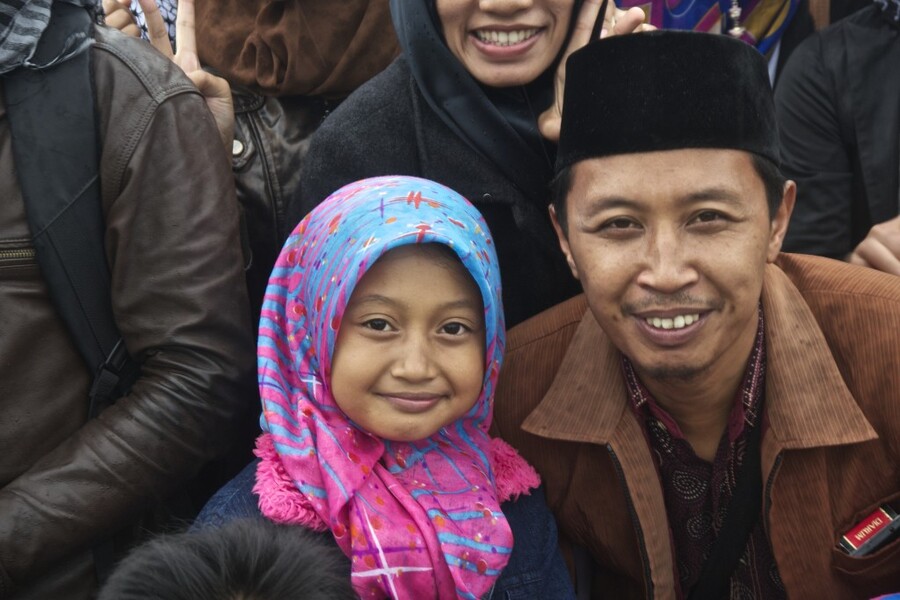
There really isn’t a ton of information on independent travel to the Dieng Plateau. If you’re looking to organize something in advance, you can find various bookable tours online. These excursions from Yogyakarta to the Dieng Plateau run between $30-70 per person and all cover the same stops that I visited during my day trip.
I was able to organize a day trip to the plateau through my hostel. For about $40 per person, my travel companion and I hired a private driver who took us around the area’s top tourist sites for the day.
WHERE TO STAY IN THE DIENG PLATEAU
Most visitors to the Dieng Plateau choose to stay in either Dieng or Wanosobo. The area has a limited number of accommodation options, most of which are homestays.
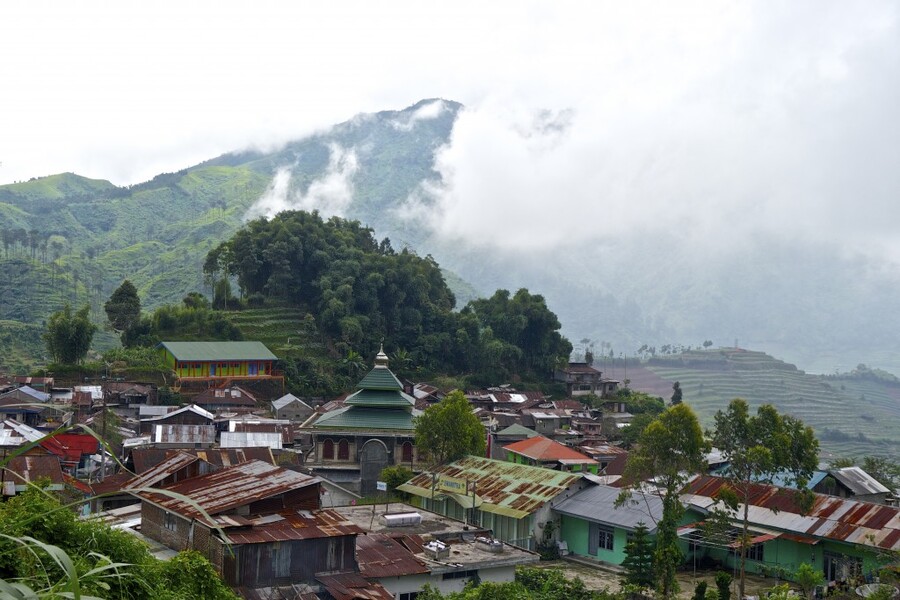
Pondok Bamboo Sendangsari, bookable online, appears to be a decent homestay option between Wanosobo and Dieng. Homestay Banteng Adventure also looks basic, yet promising.
From what I understand, a number of other options exist that are not searchable or bookable online.
*****
My Dieng Plateau day trip from Yogyakarta was not planned. It wasn’t pre-booked or mapped out or anticipated in any way.
In fact, before visiting Indonesia, I never even knew the volcanic, mist-shrouded region existed.
Yet it is for discoveries like the Dieng Plateau, that I like to keep my travel plans relatively open-ended. For you never know what unexpected destinations you might discover by chance or word of mouth.
Had I stuck to a rigid plan, I probably would never had made it to the Dieng Plateau.
And that would have been a shame.
Because the mist-shrouded off-the-beaten-path destination in Central Java ended up being one of my favorite places in all of Southeast Asia.
________________________
DID YOU ENJOY THIS GUIDE TO THE DIENG PLATEAU? PIN IT!
